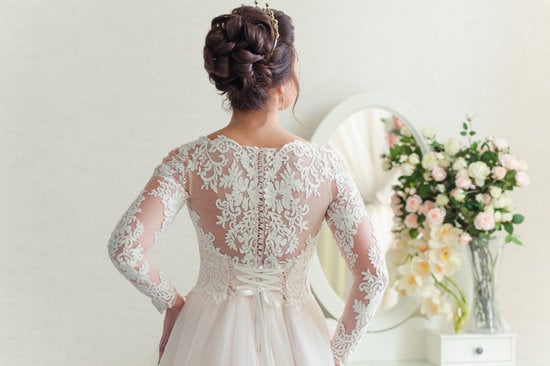What is the processional in a wedding? The wedding processional holds a significant role in setting the tone for the ceremony, marking the beginning of a momentous occasion. Rooted in tradition and steeped in symbolism, the processional is a timeless element of weddings that has evolved over time and across cultures.
The processional serves as a precursor to the main event, signaling the start of the nuptials and creating an atmosphere of anticipation and solemnity. It involves a carefully orchestrated sequence of entrances by key individuals who play vital roles in the wedding ceremony. From its historical origins to its modern-day adaptations, the processional remains an integral aspect of weddings that contributes to its overall significance and meaning.
In this article, we will delve into the concept of the wedding processional, exploring its tradition, participants, order, music and timing, as well as alternatives to the traditional approach. Additionally, practical tips for planning a memorable processional will be provided. By understanding the importance of the processional in a wedding ceremony, couples can thoughtfully incorporate this element into their special day to create a meaningful and personalized experience.
The Tradition of the Processional
The tradition of the wedding processional dates back centuries and is deeply rooted in cultural and religious significance. In early European traditions, the processional was not just a mere entrance, but rather a ceremonial walk that symbolized the transition from singlehood to marriage. In some cultures, the processional also served as a way for the community to acknowledge and celebrate the union of two individuals.
Evolution of the Processional
Over time, the wedding processional has evolved to reflect changes in society and culture. While traditional processions often followed strict guidelines based on social status and customs, modern weddings have become more personalized and individualistic. Couples now have the freedom to create their own unique processional that reflects their personal beliefs, values, and relationships.
Cultural Variations
The structure and participants of the wedding processional can vary significantly across different cultures. For example, in Hindu weddings, the Baraat procession involves the groom’s family and friends escorting him to meet his bride. In Jewish weddings, both partners may be escorted down the aisle by their parents. Understanding these cultural variations is essential for couples looking to incorporate their heritage into their wedding ceremony.
With these historical roots and cultural variations in mind, it becomes clear that the tradition of the wedding processional holds deep meaning for many couples as they embark on married life together. It sets the tone for what is to come during the ceremony and stands as an important symbol of love, commitment, and unity.
Who Is Involved in the Processional
The processional in a wedding is a significant part of the ceremony, as it sets the tone for the entire event. It involves the entrance of key individuals who play important roles in the couple’s lives. Understanding who is involved in the processional and their significance can help couples plan a meaningful and personalized procession for their special day.
Key Individuals
The traditional wedding processional typically includes several key individuals, each with a specific role to play. The procession usually begins with the officiant and groom entering first, followed by the bridal party, parents of the couple, and finally the bride. The bridesmaids and groomsmen are often included in the processional as well, walking in pairs or individually depending on preference.
Roles and Significance
Each person involved in the processional holds a special place in the couple’s lives. The bride’s father or chosen escort traditionally walks her down the aisle to “give her away” symbolically. Meanwhile, parents are often given special seating during the ceremony to honor their role in raising and supporting the couple. Other loved ones may also be included in the processional to recognize their importance to the couple.
Personalizing Your Processional
While there are traditional roles assigned to certain individuals in the processional, many couples choose to personalize this aspect of their wedding ceremony. Some may opt for non-traditional participants or arrangements that better reflect their unique family dynamics or cultural traditions.
Personalized vows or readings during the procession can also offer an opportunity to include additional loved ones in this meaningful moment. Ultimately, when considering who is involved in your wedding processional, think about those who hold significance in your life and relationship rather than adhering strictly to tradition.
Order of the Processional
The order of the processional in a wedding is a crucial aspect of setting the tone for the ceremony and creating a memorable experience for both the couple and their guests. Traditionally, the processional has a specific sequence that involves various key individuals who play significant roles in the wedding. Understanding the order of the processional can help couples plan and execute this part of their ceremony with confidence and intention.
Typically, the processional begins with the officiant entering the ceremony space, followed by the grandparents of the bride and groom. Next, the parents of the groom are seated, followed by the mother of the bride. The bridal party then makes their entrance in a particular order, leading up to the maid or matron of honor and best man. Finally, all attention turns to the highlight of the processional-the entrance of the bride.
Each participant in the processional plays a vital role in signaling not only the start of the ceremony but also in honoring and celebrating their relationship with the couple. The pace, music, and choreography of each person’s entrance can contribute to creating an ambiance that reflects the couple’s style and vision for their wedding day.
In some cases, couples may choose to deviate from tradition and personalize their processional to better reflect their values or beliefs. This could involve rearranging or omitting certain elements altogether to create a unique experience that is more in line with their personalities as individuals and as a couple. These alternatives provide an opportunity for creativity while still maintaining reverence for this important moment in any wedding celebration.
Music and Timing
The music and timing of the processional in a wedding play a crucial role in setting the tone for the ceremony. From the moment the first notes drift through the air, to the entrance of the bride, every step in the processional is carefully choreographed to create a meaningful and memorable experience for all involved.
Music is an essential element of the processional as it enhances the ambiance and creates an emotional impact on everyone present. The choice of music reflects the couple’s personality and sets the mood for the ceremony. Whether it’s a classic wedding march or a contemporary love song, the right music adds depth and emotion to each step down the aisle.
Timing also plays a significant role in ensuring that the processional flows smoothly and creates a sense of anticipation. The pace at which each member of the bridal party walks down the aisle, as well as when they enter in relation to the music, contributes to building excitement and drama. Additionally, coordinating timing with key moments such as when doors open, or when certain individuals reach specific points along their procession ensures that everything runs seamlessly.
In planning your wedding processional, consider these elements:
- Choose music that holds special meaning to you and your partner
- Coordinate with your musicians or DJ to ensure that timing aligns with each individual’s entrance
- Rehearse with your bridal party to perfect their timing and coordination
By focusing on these factors, you can create an unforgettable processional that truly sets the stage for your wedding ceremony.
Alternatives to the Traditional Processional
One alternative to the traditional processional in a wedding is to have the couple enter the ceremony together. This can symbolize the beginning of their partnership on equal footing, rather than one person “giving away” the other. Another option is to have both partners start at opposite ends of the aisle and walk towards each other, meeting in the middle before continuing together to the altar. This represents their journey towards each other and their union as equals.
For couples who want to involve their families in the processional, they can consider including parents and other family members in the procession. This can be a meaningful way to honor and involve loved ones in the ceremony. Couples can also choose to have a non-traditional bridal party, with close friends and family members walking down the aisle without adhering to traditional gender roles or expectations.
One increasingly popular alternative is for couples to incorporate cultural or religious rituals into their processional. This may include customs such as handfasting, jumping over a broom, or exchanging garlands. By integrating these traditions into the processional, couples can add depth and personal significance to this part of their wedding ceremony.
| Alternatives | Description |
|---|---|
| Couple enters together | Symbolizes equality and partnership |
| Involving family members | Honors loved ones and includes them in the ceremony |
| Non-traditional bridal party | Allows for more personalized choices without adhering to traditional roles |
Exploring these alternatives allows couples to create a wedding processional that truly reflects who they are as individuals and as partners. It’s important for couples to discuss what is most meaningful and significant to them when considering options for their wedding processional. Ultimately, whatever choice they make should feel authentic and representative of their relationship as they embark on this new chapter together.
Tips for Planning a Memorable Processional
When planning a wedding, one of the most important aspects to consider is the processional. The processional sets the tone for the entire ceremony and is an opportunity to create a memorable and meaningful experience for both the couple and their guests. Planning a memorable processional requires careful thought and consideration, but it can ultimately enhance the overall atmosphere and significance of the wedding day.
When considering who will be involved in your wedding processional, it’s important to identify key individuals who will play significant roles in the ceremony. This typically includes the bridal party, parents of the couple, grandparents, and any other family members who hold special importance. Each person’s placement in the processional should reflect their relationship to the couple and their significance in their lives.
Another important aspect of planning a memorable processional is choosing music that complements the tone of your wedding. The music played during the processional sets the mood for the ceremony and can evoke emotions from both the couple and their guests. It’s crucial to select music that holds personal meaning or resonates with you as a couple. Additionally, consider working with a musician or DJ who has experience with weddings to ensure that timing and execution are flawless.
In order to plan a truly unforgettable processional, couples should communicate openly with their officiant or wedding planner about their vision for this aspect of their ceremony. By discussing preferences, traditions, and any personalized touches they would like to incorporate, couples can work together with professionals to plan a processional that perfectly reflects their unique style and relationship.
With careful planning and attention to detail, couples can create a processional that not only captures their love story but also enhances the significance of their special day.
The Significance of the Processional in the Wedding Ceremony
The wedding processional holds a significant role in setting the tone for the entire ceremony. It serves as the grand entrance of the bridal party and the bride, marking the beginning of the nuptial celebration. The processional is a traditional and symbolic element that reflects the couple’s cultural background, personal preferences, and overall theme of their wedding. It is an essential component that contributes to the overall atmosphere and meaning of the wedding ceremony.
Key Points About The Significance Of The Wedding Processional:
- Symbolic Importance: The processional symbolizes the transition from singlehood to marriage, representing a new chapter in each individual’s life. It also signifies the joining together of two families as they come together to witness and celebrate this momentous occasion.
- Emotional Impact: As one of the most anticipated moments in a wedding ceremony, the processional evokes emotions from both participants and attendees alike. The sight of loved ones walking down the aisle towards their new future can be deeply moving for all involved.
- Setting The Mood: The music, timing, and coordination of everyone walking down the aisle in procession play a crucial role in establishing the mood for the rest of the wedding ceremony. Whether it’s traditional or contemporary, classical or modern – it helps to create a memorable atmosphere that embodies love, joy, and commitment.
In planning a wedding processional, couples should carefully consider these key elements to ensure that it represents their unique style and resonates with them personally. From choosing meaningful music to assigning specific roles for family members or friends, every aspect should reflect their vision for this special day. Ultimately, understanding the significance of this tradition can guide couples in creating a memorable wedding ceremony that captures their love story beautifully.
Conclusion
In conclusion, the processional in a wedding is an essential and meaningful part of the ceremony that sets the tone for the entire event. From its historical roots to its significance in different cultures, the processional has evolved over time but remains a cherished tradition. It involves key individuals such as the bridal party, parents, and of course, the bride, each with their own roles that contribute to the symbolism of the ceremony.
The order of the processional is crucial, with music playing a significant role in setting the mood and timing for each entrance. Couples have also embraced alternatives to the traditional processional, finding ways to personalize this aspect of their wedding to reflect their unique style and preferences. When planning a wedding, it is important for couples to consider practical tips for coordinating a memorable processional that aligns with their overall vision for the ceremony.
Ultimately, the processional holds great significance in contributing to the overall atmosphere and meaning of a wedding ceremony. As couples embark on their wedding planning journey, it is important for them to consider how they can incorporate their own personal touches into this timeless tradition. Whether following tradition or introducing non-traditional elements, every couple has an opportunity to create a beautiful and meaningful processional that truly represents their love and commitment.
Frequently Asked Questions
What Is Processional and Recessional?
Processional and recessional are terms used in the context of a wedding ceremony. The processional refers to the entrance of the wedding party, including the bride, groom, and their respective wedding parties, while the recessional signifies their exit at the end of the ceremony.
Who Walks First in a Wedding?
Traditionally, in a wedding, the first person to walk down the aisle is the officiant or celebrant who will be conducting the ceremony. They are followed by the rest of the wedding party – usually starting with any young attendants such as flower girls and ring bearers, then bridesmaids and groomsmen, and finally, the bride herself with her escort.
What Are the Steps of the Processional?
The steps of the processional involve a carefully orchestrated entrance sequence. It typically begins with the officiant entering and taking their place at the altar. This is followed by any young attendants who make their way down the aisle.
Next come the bridesmaids and groomsmen walking in pairs, leading up to that highly anticipated moment when the bride makes her grand entrance accompanied by her chosen escort. Each participant walks slowly and gracefully down the aisle to create a sense of anticipation and reverence for this special occasion.

I have been involved in marriages for over 20 years helping couples and singles understand more about them.





